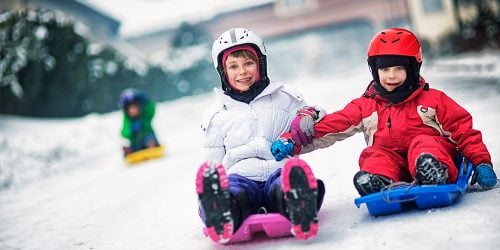Playgrounds, parks and schoolyards are important and well-used features of most communities, providing spaces for children and families to engage in a variety of outdoor activities, during both winter and summer. Most of the time, these activities simply bring fun and enjoyment. However, sometimes accidents occur and someone is injured. If that happens to you or a loved one, you may wonder who could bear liability.
How common are playground injuries?
Some data is available to help understand the prevalence of injuries occurring in parks and playgrounds. One source suggests that as many as 20,000 to 30,000 children in Canada are treated in hospital emergency departments for playground injuries each year. Another source indicates that in 2016, 1,841 children in Canada under the age of 18 required hospitalization after suffering serious injuries like fractures and head injuries.
While numbers reflect injuries only to children, they illustrate the very real potential for accidents with serious consequences.
What types of activities?
In addition to providing typical playground equipment like monkey bars and swings, parks, playgrounds, and schoolyards often serve as the location for a wide range of other activities, throughout the year. For example, you or your loved ones may make use of the following kinds of facilities available in public spaces:
- Outdoor ice rinks
- Toboggan runs
- Cross country ski trails and snow shoe trails around the City
- Skateboard parks and bike parks
- Sports fields (soccer, baseball, football)
- Basketball or tennis courts
- Swimming or splash pools
- Bike paths, including winter cycling trails
Regardless of whether you are using these facilities as part of an organized activity (e.g., a sports league) or simply for unorganized play and fun, there are people and entities who have a responsibility to take steps to ensure you can do so safely, and who may be required to compensate you if neglect of their obligations results in an accident.
Responsibility of Property Owners and Operators
Municipalities and other entities who own or operate playgrounds and other outdoor spaces are bound by certain obligations intended to ensure a safe environment and keep the risk of mishaps to a minimum. These obligations are imposed by the Occupiers’ Liability Act (“OLA”), as well by common law principles of tort law and negligence.
With regard to the OLA one important exception to note is that recreational trails are normally not covered by the OLA (per s 6.1). There are exceptions to this exclusion so if you’ve been injured on what would be considered a recreational trail you should get advice to determine your options.
The OLA defines an “occupier” as a person or entity who has physical possession of premises, or someone who has responsibility for, and control over, the condition of the premises, the activities conducted there, and the persons allowed to enter the premises. “Premises” applies to both indoor and outdoor property, including parks and playgrounds. An “occupier” is not only the property owner, but also someone who makes arrangements to be entitled to use the property, for example under a lease or some other contract.
It is possible for there to be more than one “occupier” at a time – meaning that both the owner of the property and anyone contracting with them for use of the property may be responsible for ensuring the safety of participants in activities that take place there. An example would be a neighbourhood soccer association that makes arrangements to use municipal sports fields to host a soccer tournament. If a participant or spectator gets injured at the tournament, both the municipality and the soccer association could be liable.
In addition to people having control of the park or playground, or the activities taking place there, liability can also be imposed on persons who are hired for maintenance or caretaking, and who do so in a negligent manner that causes or contributes to injury.
What Obligations Are Owed by an Occupier?
The OLA stipulates that an occupier owes a duty to take reasonable care to see that visitors will be reasonably safe in using the premises. This is not a standard of perfection, and liability will only arise where a fault has been committed. Depending on the circumstances, a fault may be something that results in the unsafe condition of the park or playground, inadequate supervision of activities taking place there, or defects in equipment provided.
For example, in Kelemen v. Corporation of Delta, the municipality was ordered to pay damages to the plaintiff, who was injured when the chain link of a swing he was using came loose from the swing structure, causing him to fall to the ground from the apex of his swing. The court found that inspections of the swing conducted by the municipality were insufficient and should have discovered that one of the S-joints on the swing had an excessive gap, which resulted in the accident.
In Uggenti v. Hamilton (City), the municipality was found liable for injuries suffered by the plaintiff, who hit a ditch while tobogganing on municipal land. The court found that the snow-covered ditch was a hidden danger and that the City knew about the ditch and the danger to tobogganers, but had failed to take reasonable steps to warn tobogganers of the danger.
In Moran v. City of Sault Ste. Marie, the municipality was found liable for injuries to a child using its skating rink, based on a failure of its employee to monitor users on the rink and enforce a policy not to allow hockey to be played during the free skate period. The child was hit in the head by a hockey puck shot by another person using the rink.
These cases illustrate the kinds of failures by a municipality or other occupier that can support a claim for damages by someone who has been injured.
What About Other Users of a Park or Playground?
Users of a park or playground are required to conduct themselves in a reasonable manner and with due regard for the safety of others.
The case of Parks v. The Board of School Trustees offers an example of liability being imposed on another user who was found to have engaged in reckless behaviour. The plaintiff suffered a severe gash to her shin when she was hit by the defendant’s skateboard. The accident occurred on school property. The defendant and his friend had decided to push their skateboards as hard as they could on the cement path and out onto the grass area to see whose skateboard would go the farthest. Because the accident occurred after school, outside the hours when the school normally provided supervision, the school board was found not to have committed any fault, and therefore the defendant who pushed the skateboard was solely liable.
Contributory Negligence
It is important to keep in mind that users of a playgrounds and other outdoor spaces are also required to take reasonable care for their own safety. A person who is found to have behaved in a reckless manner may be contributorily negligent, and thus responsible in whole or in part, for their own injuries, if their own unreasonable behaviour is found to have caused or contributed to their misfortune.
An illustration is provided by the case of Karpouzis v. Toronto (City of). The plaintiff in that case suffered a brain injury after a skateboarding accident on a pathway in a municipal park. The court found that in choosing to go skateboarding on an unlit path at 2 a.m., without wearing a helmet or any protective gear or carrying a flashlight, the plaintiff had assumed the risks of the activity, and no fault could be attributed to the City in the circumstances.
Keep in mind that even if you are partly responsible for your own injuries, you can still be awarded damages, but the amount may be less than you if you were not at fault in any way. In these situations courts apportion responsibility for your damages on a percentage basis that reflects the extent to which each party was at fault. For example, if the court decides your damages are worth $50,000 but believes that based on the evidence you are 50 percent responsible for the accident due to your own contributory negligence, your damages would be reduced by 50 percent, and your total recovery would be $25,000.
What to do if an accident happens
If you or a loved one suffer an accident while at the skating rink, toboggan run, park, playground, school yard, or some other public space, your first priority is to seek appropriate medical care. If the situation permits, it is a good idea to document the circumstances of the accident, for example by taking pictures, collecting witness information, or making note of any other relevant factors such as time of day or weather conditions.
An experienced personal injury lawyer can help to assess your situation to determine whether you may be entitled to seek compensation for your injuries from a municipality, property owner or other party. If you or a loved one have suffered injuries, contact us today for a free consultation.

